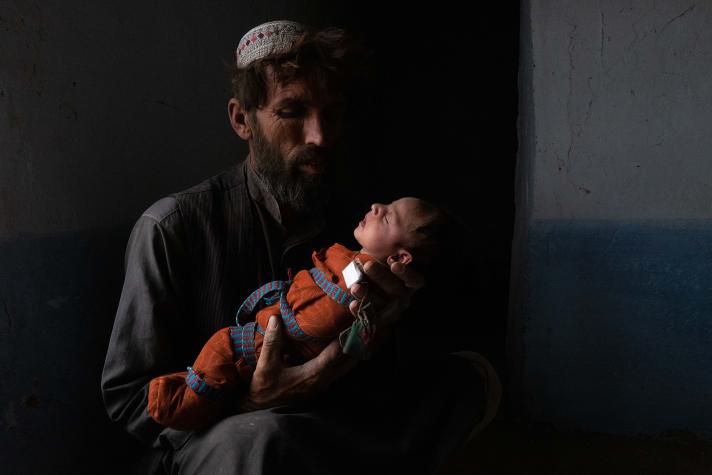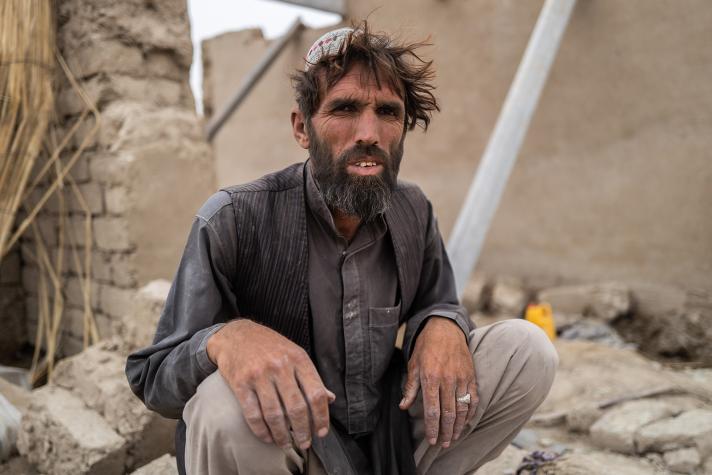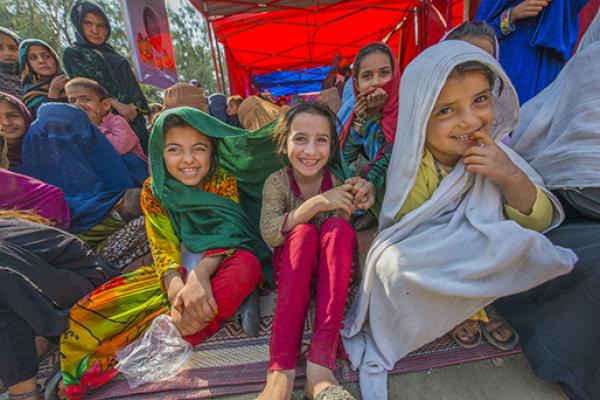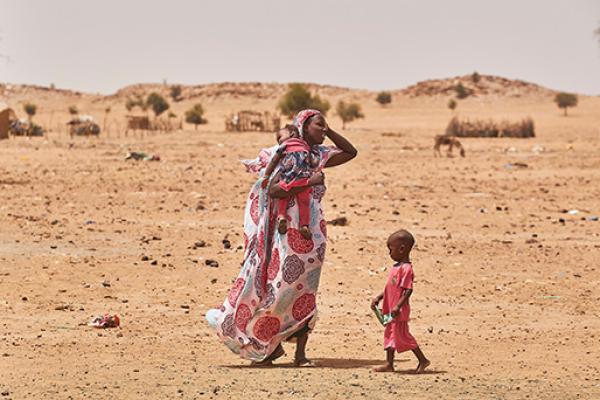Over the past 4 decades, the constant conflict has vastly deteriorated Afghanistan’s ability to cope with the effects of climate change.
Communities have had their coping mechanisms slowly stripped away by violence and poverty, worsening the impacts of droughts, flooding, and related issues.
Now, 12 months from the Taliban taking power, these communities are facing more challenges than ever before.
EU-funded humanitarian programmes, including with the Danish Refugee Council, are working to provide relief to communities affected by decades of conflict and the impact of climate change.
Afghanistan is currently experiencing its worst drought in 27 years. In a country where 70% of the population lives in rural areas and 90% of livelihoods depend directly or indirectly on agriculture, the effects of these disasters cannot be understated.
In 2022, Afghanistan’s rate of emergency food insecurity increased by a staggering 35% from the previous year, leaving hundreds of thousands of families teetering on the brink of starvation.
A 2020 climate report issued by the Asian Development Bank pointed to Afghanistan as “one of the most vulnerable nations to climate change impacts in the world.”
More than 3 decades of conflict have left Afghanistan without the means effectively face down these problems alone. And many communities, still struggling to rebuild, are not equipped to face the months and years ahead.
Thanks to EU humanitarian funding, the Danish Refugee Council is providing multi-purpose cash distributions, which families can use to supplement income lost through drought, flooding, and other climate-related disasters.
But as the impacts of climate change continue to worsen across the region, there are countless villages like Zirkano Masjid and Saderga, and the demand for assistance far outweighs the supply.
Suffering the effects of climate change
Muhammad Ajman lives in Zirkano Masjid. The village is surrounded by dry, pale plains, and a wide, brown river meanders nearby.
“When I was a child, I was caught in a big hailstorm”, he says, running long fingers over his grey-flecked beard. “That was the only other time I've seen hail in my life, and we hardly ever see rain.”
The memory stayed with him. “The hail quickly turned into rain and the rivers quickly started to flood,'' he says. “So, when I saw the hail this time, I knew that floods were coming again.”
When the storm came, Ajman acted quickly. “As soon as the storm began, I started running,” he says. “I grabbed my wife and my 4 kids,” he says, “And took them to the home of a relative on higher ground.”
When the floodwaters receded a few hours later, the full extent of the damage to Ajmal’s house—and to the entire village—was painfully clear.
Dozens of homes had been wiped out, walls toppled, roofs collapsed, and belongings washed away. Neither Ajman nor his neighbours have the money to rebuild.
Running out of water
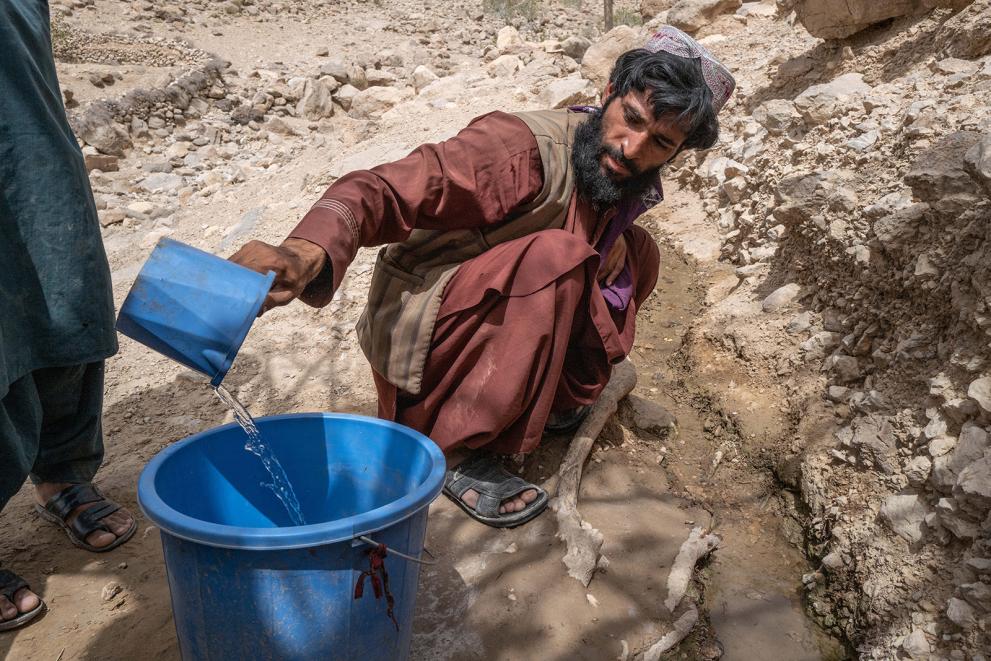
40km west from Ajman’s home, in the village of Saderga, 30-year-old Masoum is facing a far different crisis, yet it’s fed by the same underlying cause.
“This used to be a proper stream,” he says, his tall, slim form crouching over a tiny, stagnant, trickle of water a few hundred meters uphill from his home.
As he scoops the precious liquid into a bucket with a small plastic cup, he laughs sardonically. “Now it takes half the day to fill up this single bucket.”
Now, there is hardly enough water to flow at all. Just below the point where the villagers collect their water, the trickle simply disappears into the parched soil, leaving nothing more than a small patch of dark, wet earth.
The lack of water has profound effects on the day-to-day life of everyone in the village.
Bashuro, 45, has been a widow for 8 years. After her husband died, she was not only left to care for her own 2 children, but also her grandchildren. “I only have one son who is working,” she says.
“It’s difficult for us to grow anything here because the quality of soil gets worse every year. We have a few goats, but I have no other means of income.”
Bashuro works hard to find other means of income. In the summer, she collects the dried dung from sheep and goats around the village and sells it as fuel and fertilizer in the local bazaar.
“It’s getting harder every year,” she says, spreading out her wares on the bare earth floor of her home. “I can’t support the family with only this.”
2 days after the flood in Zirkano Masjid village, Kandahar Province, the muddy high-water mark is still clearly visible on the walls of local shops and homes.
Groups of children wander alongside the road, digging for belongings in the mud as shopkeepers shovel trash and debris from their doors. Life has already resumed, but the spectre of another disaster hangs over everyone in the village.
Life after the floods
For Ajman and his family, the coming days will not be easy. With nowhere else to stay, they’ve moved into a single empty room attached to the compound of a local madrassa.
“We started to gain hope after the fighting ended,” Ajman says. “It’s been almost a year, and we were starting to hold a little hope for the future, even though things were still hard.”
“It took me 9 months to build my house with my bare hands,” he says quietly, looking out the room's single small window, “but it only took a few minutes for the floods to wash it away.”
For now, rebuilding his house is a financial burden he and his family cannot afford to bear. On his meagre income—often less than 4$ per day—Ajman was forced to take out loans from local money lenders to fund the construction of his house.
Afghanistan’s economic collapse has hit him harder than most, and he is at a loss with what to do next. His home is in ruins, and, like many of the other families in his village, he is deeply in debt.
“If we can’t find any other place to stay,” he says, “I'll use some plastic tarpaulins to build a tent near the ruins of our house.”
He shakes his head ruefully as he cradles his 40-day-old daughter in his arms.
“We’ve dealt with a lot over the past years. But I don’t know what else I can do.”
By Kern Hendricks for Danish Refugee Council, Afghanistan.
Publication date: 18/08/2022

